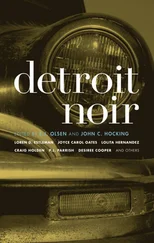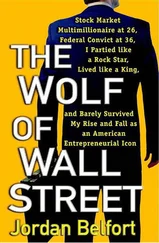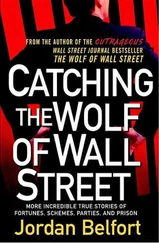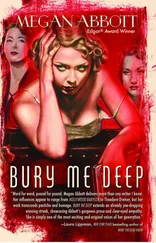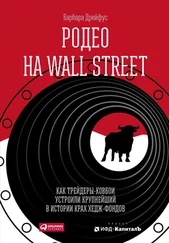All books are collaborative efforts, but none more so than anthologies, and so I owe many thanks to many people: first and foremost, to all of the contributors, for their talents, time, good humor, and professionalism; to Johnny Temple, for seeing the possibilities; and to Reed Coleman, for a good eye and sound advice.
Wall Street is long on tradition. The opening bell, the floor traders’ vivid jackets, black Town Cars at curbside, long nights spent hunched over spreadsheets, helicopters to the Hamptons, lap-dance tabs that run to five figures — these shared rituals and experiences bind generations of money folk one to the other, and so preserve and propagate the culture. But there’s one link in that chain more tarnished than the rest, and less fondly regarded: crime.
Financial crime has a history much longer than Wall Street’s — by several thousand years at least. Conflicted interests, insider trading, and outright fraud are as old as the first marketplaces — as old as the first swap of flint chips for bearskins, no doubt — and they’ve been part and parcel of Wall Street since the days of the old Dutch barricade. Just as Wall Street has raised finance to high art (or at least, to expensive spectacle), so has it done crime bigger and flashier than its Old World antecedents. Sure, there was the South Sea scam, and that business with the Vatican Bank, but Wall Street has given us Robert Vesco, Ivan Boesky, and the Hunt brothers, not to mention playing midwife to Enron, Adelphia, and Qwest. And unlike some traditions (floor traders are an endangered species at the NYSE, and the bean counters are ever more skeptical about receipts that come dotted with glitter), crime on Wall Street actually has a future.
Caveats about past performance and future results notwithstanding, I feel pretty safe in this prediction. The news gives me comfort. Every day seems to bring more stories of front-running, insider trading, and cooked books, and some business blogs (the more ironic ones, to be sure) even offer travel tips for white-collar bail-jumpers. Crime endures on Wall Street through cycles of boom and bust, and waves of regulation, deregulation, and re-regulation — a constant in an otherwise changing world.
This persistence and bright future of crime stands in marked contrast to the public image the Street projects these days. Viewed from a distance, on the cable business channels, say, it seems like such a clean, well-lighted place. The sort of place where investment decisions are guided by careful formulae and subtle strategies, by dispassionate consideration of all the facts and figures; the sort of place where cool reason prevails. The information is out there for all to see; you just need to interpret it correctly. It’s as pure a meritocracy as one could ask for, so get some software, open a margin account, and knock yourself out. It’s a comforting notion — but it doesn’t hold up on close inspection. Close up, you see distortions in how the information flows (remember that suspicious trading activity before the merger announcements?). You see the sheen of sweat, and you can almost smell the fear and greed.
News reports of Wall Street crime don’t often focus on the gritty parts. Not surprisingly, they’re usually more concerned with the nuts and bolts of a scam — the who did what when, the mechanics of the money laundering. The human details get lost in the numbers and technique. But it is in those details — in the textures of fear, greed, envy, and paranoia, in the class, race, and sexual frictions — that Wall Street is revealed as a very noirish place indeed, a place that is far more Jim Thompson than Warren Buffett.
Beyond the buying and selling, the dealing room is a theater of outsized, often dysfunctional personalities, banging heads (and other body parts) in sometimes ugly, sometimes entertaining, and usually noisy and fascinating ways. And always there’s money at stake — big money. Of course, as the cliché goes, that’s just for keeping score. To many of the players, money is a proxy for more desperate stakes: the sense of self is on the line. Who has the biggest, brassiest pair? Whose is longest? It’s a zero-sum game, and if he’s the Man (or she is), then you are not. Step onto any trading floor, anywhere in the world, and watch the action for a while — you’ll get what I mean.
The writers in this collection get it, and that’s no surprise — many of them are industry insiders or refugees, and all are keen observers of the Wall Street scene. Their stories are dark (sometimes darkly funny) tales of hungry egos, cutthroat competition, cultural dislocation, sweaty suspicion, not-so-innocent bystanders, and desperate deals with a variety of devils. And while these tales offer not a shred of advice about what to do with that 401k, their cautionary aspects are unavoidable.
Hard to miss also is that many of these stories are not set on those short, crowded blocks between Trinity Church and the East River. This too should not surprise. In the past couple of decades, Wall Street has decamped from its historic home in lower Manhattan and — riding a wave of globalization and deregulation — conquered vast new territories around the world. There are stones from the old Dutch wall in Midtown Manhattan; Greenwich, Connecticut; London; Moscow; Mumbai; and in the shining sci-fi skyline of Shanghai, too. Today, Wall Street is everywhere — the undisputed capital city of money — and these writers explore its neighborhoods old and new, from its downtown roots to its glossy uptown digs, from Main Street, U.S.A. to the wider world beyond. It’s a shadowy landscape, to be sure, but they are savvy guides.
Peter Spiegelman
Ridgefield, Connecticut
December 2006
At the top of his game
by Stephen Rhodes
40 Broad Street
On the day they conspire to put a bullet in my head, I experience an epiphany.
My epiphany is this: a fourteen-year career on Wall Street wears away at your soul, as assuredly as a stream against limestone. It pushes you to a place where you don’t fully recognize who you are, or how you got here. Everyone around you becomes a stranger, including — no, especially your own wife. Working sixteen-hour days in those glistening glass towers in Manhattan, engaging in mortal combat with some of the planet’s brightest and most power-obsessed bastards who have trained their full concentration on destroying you and stealing the business you’ve built up over the years — well, it hardens you. Wall Street eats its young, and today the beast has a particular appetite for a certain thirty-six-year-old maverick with seventy-eight people reporting to him (which would be me).
So today they plan to execute me. How do I know this? Well, last night at 9:30 p.m., an urgent BlackBerry message instructed me to report to Howard Ranieri’s office at 7:30 a.m. sharp for a mandatory meeting. That particular e-mail was no surprise; a head’s-up had come from a friend in HR that my employment would be terminated during this impromptu meeting.
My response: Bring it on, jerkweed. Bring it on.
Ranieri is now more than forty minutes late for his own meeting. Typical move for this passive-aggressive, hair-challenged, beer-gutted, no-talent clown. I should mention that Ranieri is my co-head in the Equity Structured Products group.
Outside Ranieri’s office, the phones on the trading floor twitter relentlessly. This morning, Goldman Sachs has issued a dire report on certain Latin American economies. As a result, the overseas financial markets are getting walloped.
Читать дальше




